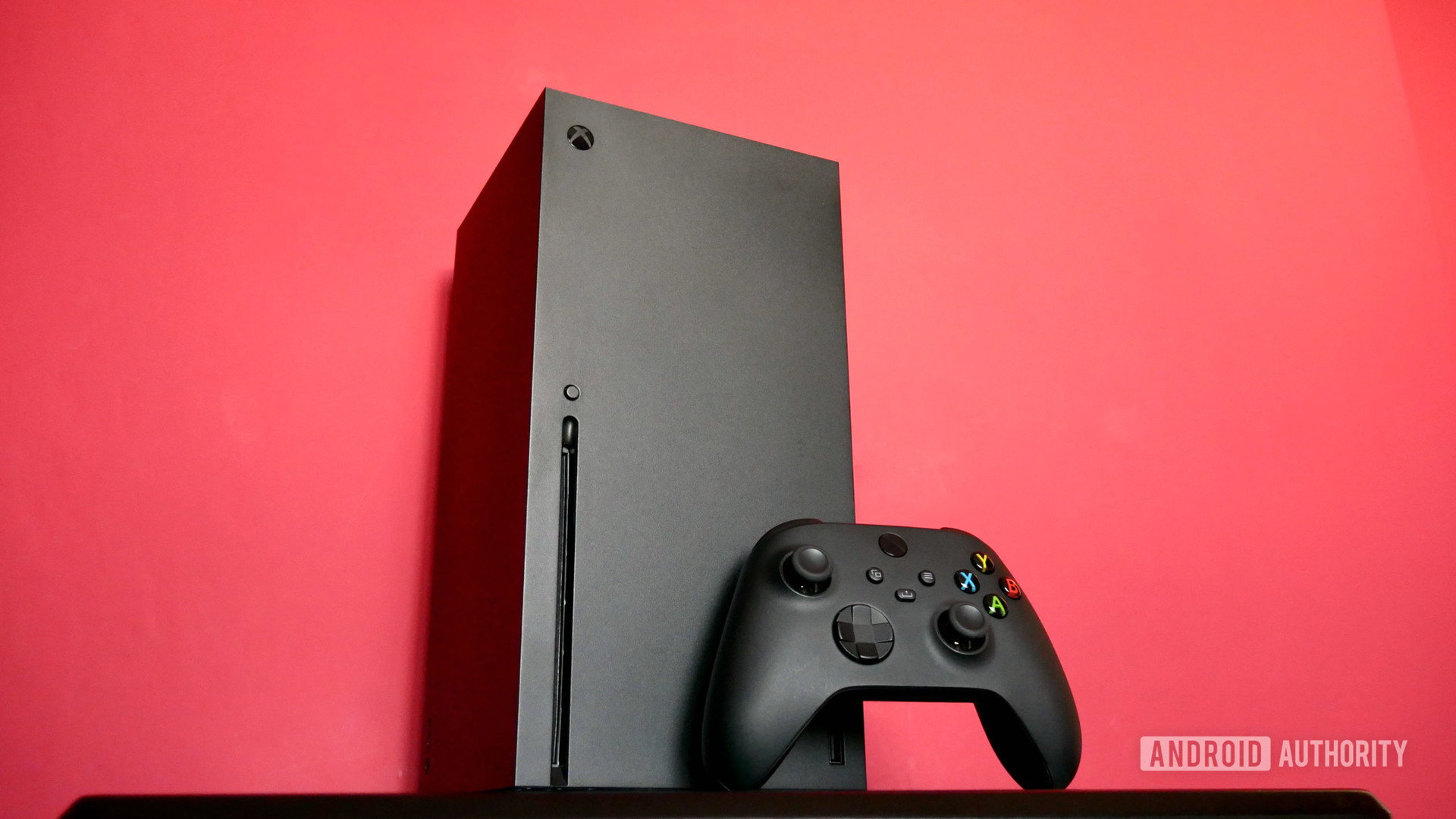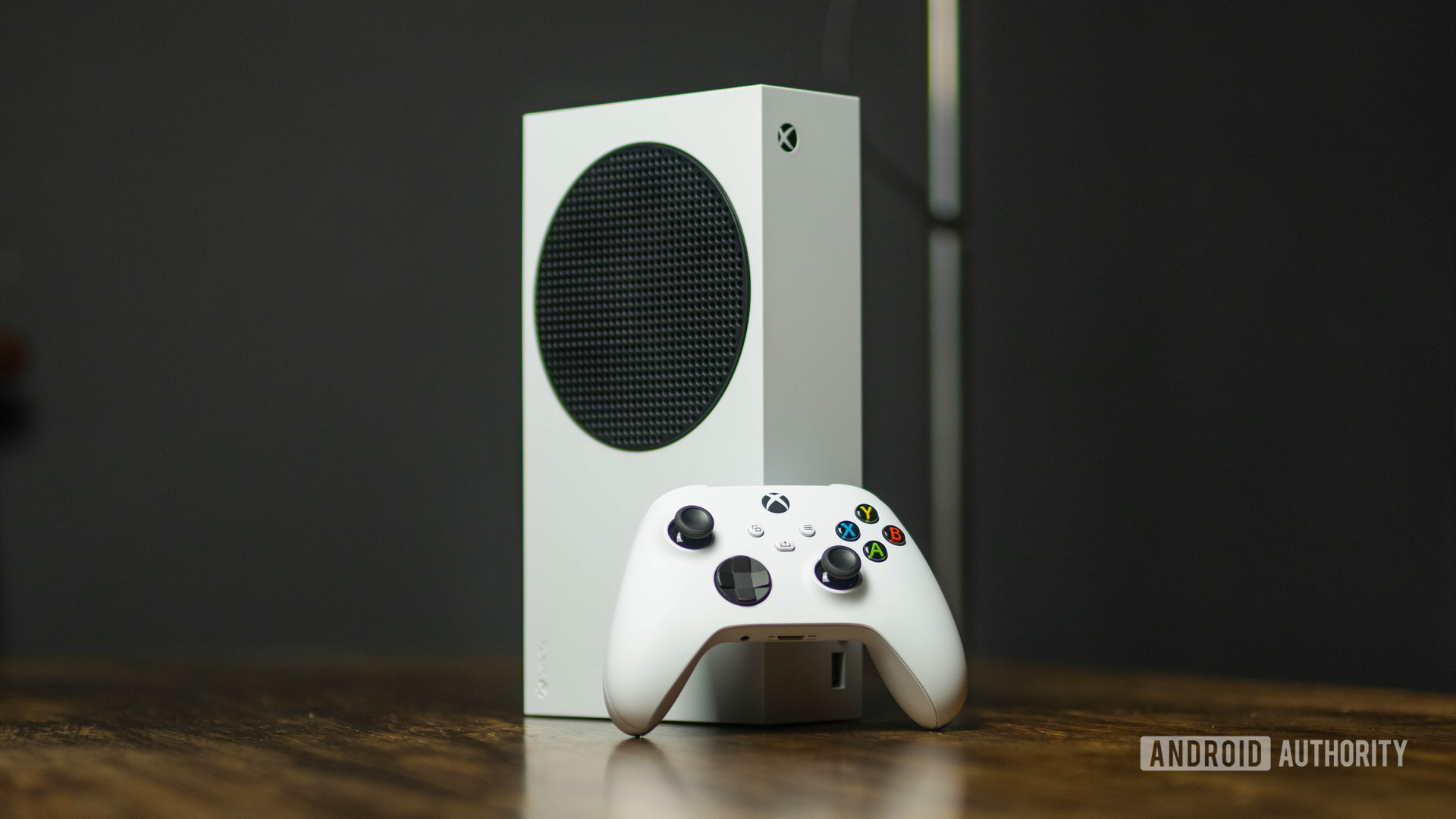Affiliate links on Android Authority may earn us a commission. Learn more.
Xbox Series X vs Series S: What's the difference and which should you buy?
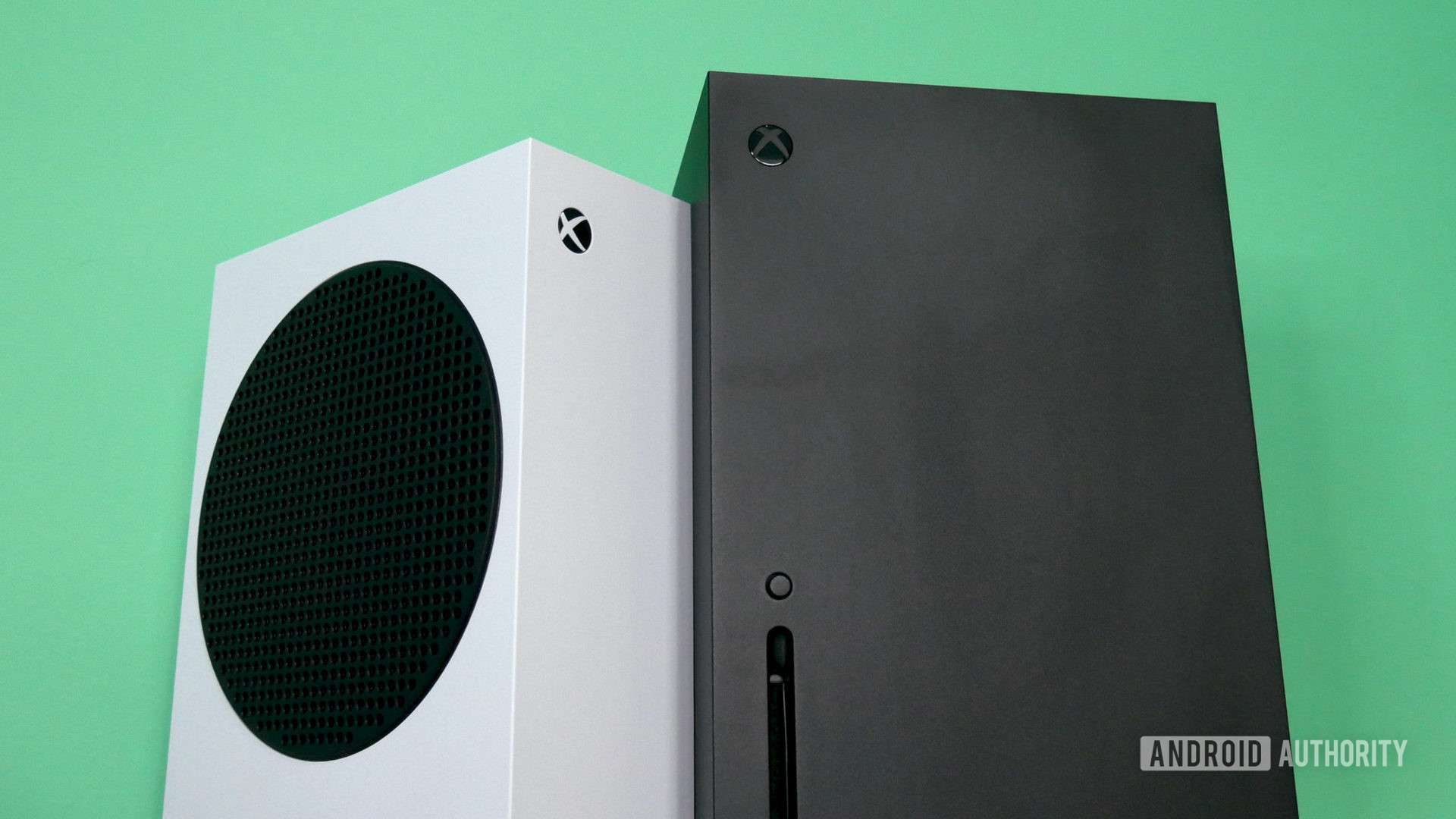
The Xbox Series X and Xbox Series S represent Microsoft’s cutting edge in game consoles. They’re both obviously related, but what are the key differences and, crucially, which console is right for you? That’s what we’re looking at in this Xbox Series X vs Series S comparison.
While the two consoles can play the same games and use the same accessories, there are fundamental differences between the flagship Series X ($500) and the more affordable Series S ($300).
For a full breakdown of each machine, be sure to check out our reviews below. In this piece, we’ll look at how the consoles stack up against each other to see which best suits your gaming needs.
Our verdicts: Xbox Series X review | Xbox Series S review
Xbox Series X vs Series S: Design
The Series X and Series S may come from the same family, but each has its own style and design quirks.
First off, size. The Xbox Series X is a big boy. It’s not as enormous as the PlayStation 5, but its bulky, obelisk-like chassis forms a mighty presence around your TV. The Xbox Series S is smaller. Both have a large fan and grill for venting heat, though they run whisper-quiet, so you won’t need to worry about noise.
The Xbox Series S is a more traditional rectangle-styled cuboid like previous Xbox consoles and looks best laid flat. While the Series X can also be placed horizontally, it looks ridiculous, almost like it’s been accidentally pushed over. Finding a place in a cramped entertainment setup can be a pain. Meanwhile, the diminutive Series S is far easier to accommodate and looks equally classy no matter the orientation.
If you want to play games on disc, you'll need to splash out on the Series X.
Ports are mirrored on both consoles: power, Ethernet, two USB-A 3.2, and HDMI-out. There’s another USB-A port on the front, a power button within the Xbox logo, and a button for pairing controllers. The consoles also have a storage slot on the rear for proprietary expansion cards.
Aside from color schemes — matte white with a black grill for the Series S, and matte black with green accents on the grill for the Series X — the only other significant design diversion is the disc drive. Or, in the Series S case, the complete lack of one. If you want to play games on disc or watch 4K Blu-Rays, you’ll need to splash out on the Series X.
Xbox Series X vs Series S: Controllers
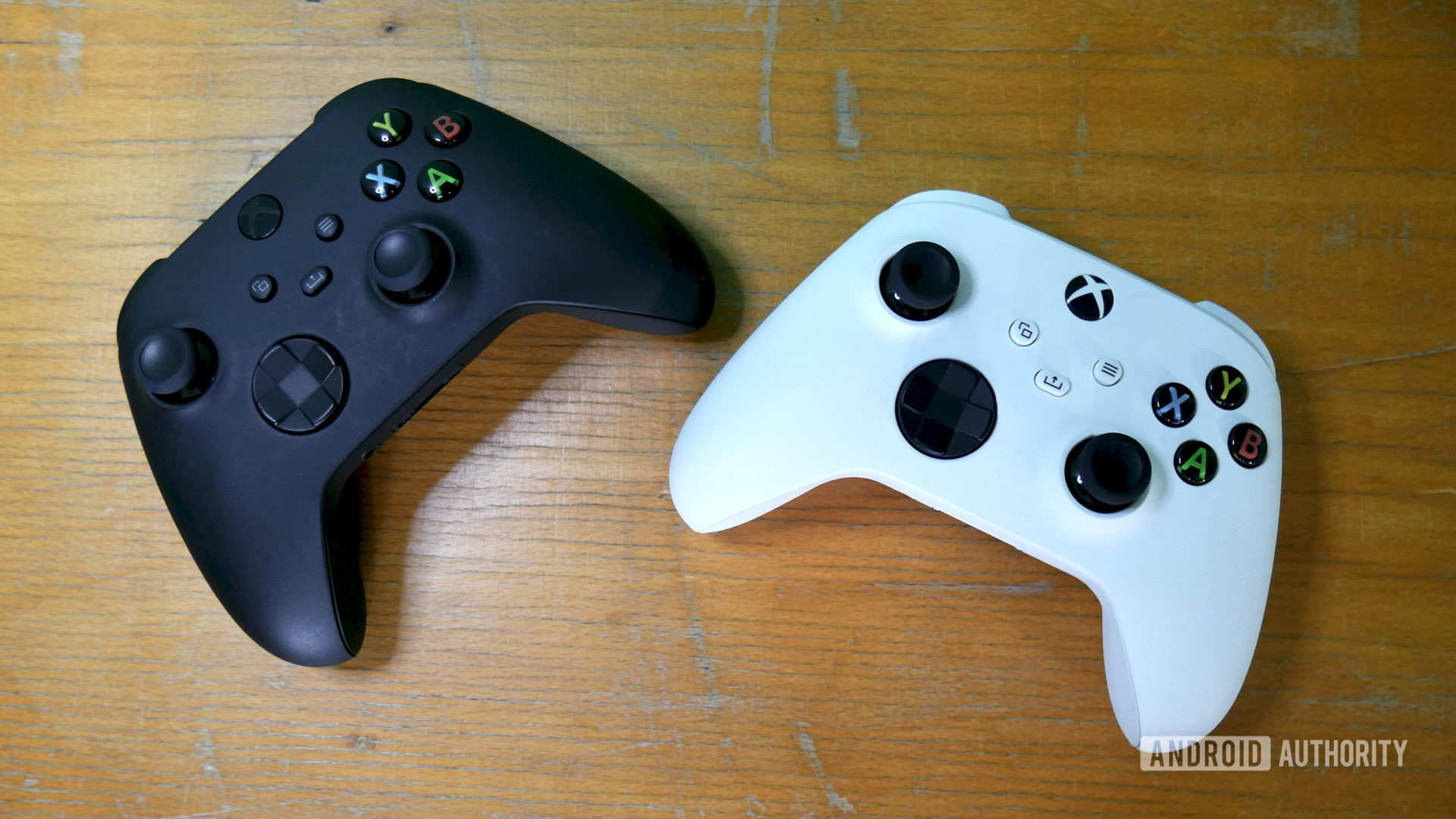
The Xbox Wireless Controller bundled with the Xbox Series X and Series S is functionally the same no matter which console you buy. The only difference is the color scheme — black for the Series X and white for the Series S.
I talked at length about the controller itself in my Xbox Series X review. Still, in short, it’s an iterative progression from the Xbox One family’s controllers, with improved D-pads and a new share button, but an otherwise near-identical overall design.
Speaking of which, any Xbox One controllers you have (including the Xbox Adaptive Controller) are all directly compatible with either Series console. While there’s something to be said for the next-gen upgrades found in the rival PS5 DualSense controller, Microsoft deserves credit for ensuring that older gamepads don’t end up becoming obsolete.
Performance and storage
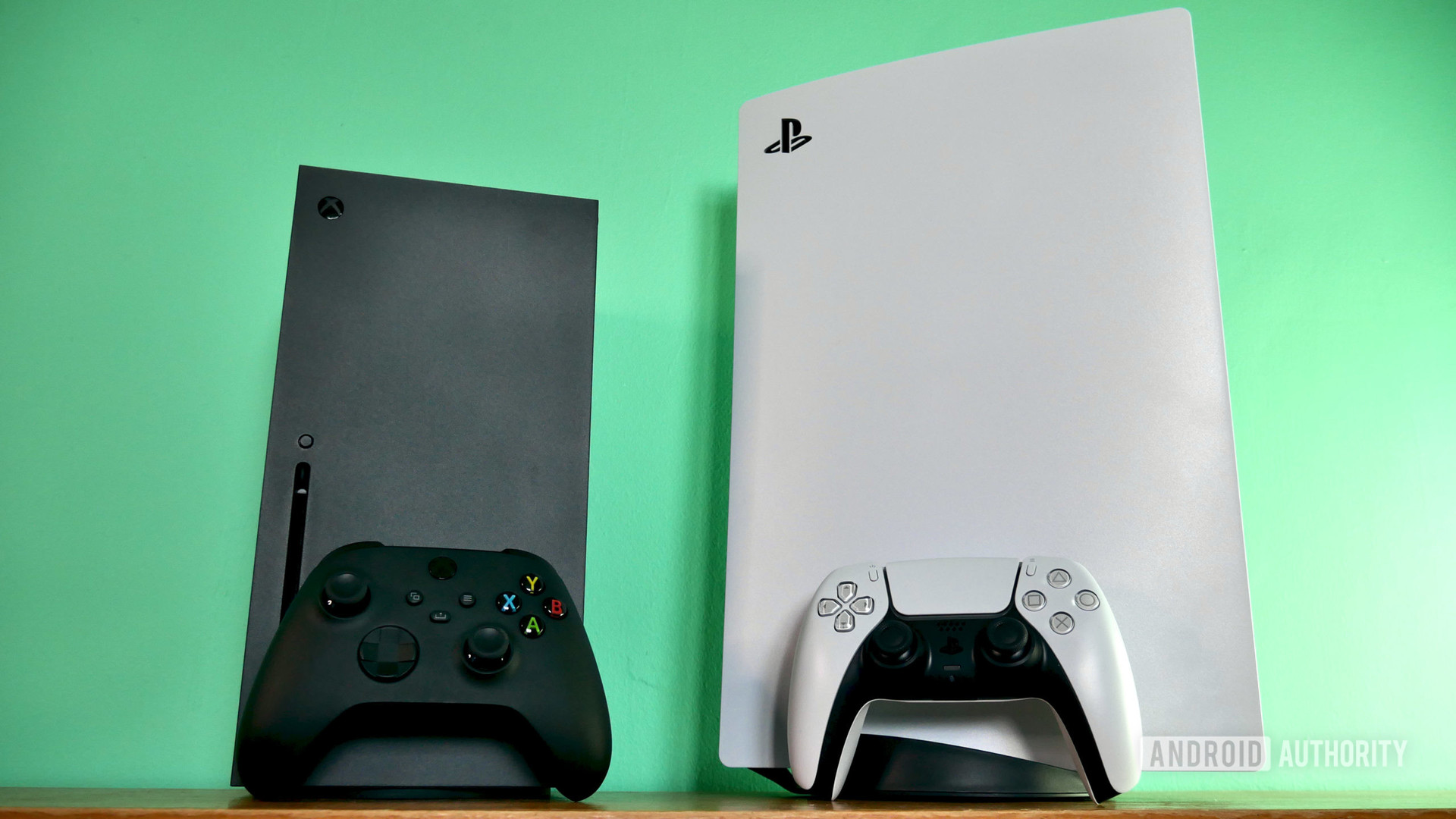
The Xbox Series X and Series S are built on the same fundamental architecture, but that doesn’t mean you’re getting the same processing grunt out of both machines. The $200 question is: what raw power boost do you get for the extra cash with the Series X vs the Series S?
The Series X runs on a custom AMD eight-core Zen 2 CPU (3.8GHz peak) and AMD’s Navi-based RDNA 2 graphics chip with 12 teraflops of GPU power and 52 compute units at 1.825GHz. The Series S has the same basic architecture but pulls the CPU back to a 3.6GHz peak per core, while the GPU is reduced to four teraflops and 20 CUs at 1.565GHz.
The result of the hardware disparity is a different target resolution — native 4K (2160p) for the Series X and Quad HD (1440p) for the Series S.
In practice, neither console sticks to those targets 100% of the time, as resolution will dynamically scale depending on the game you’re playing. The difference is that the Series S will occasionally drop to 1080p to compensate for reduced processing power. At the same time, the Series X tends to bottom out at 1440p only in extreme cases.
It’s the same story with frame rates. Both consoles technically support 120Hz gaming, but 60fps is the baseline for the Series X, while some high-profile games on Series S — especially third-party games like Assassin’s Creed: Valhalla — plummet to 30fps. Likewise, the Xbox Series X can render a greater level of detail at longer distances, though as with the overall resolution, these aren’t things you’ll notice unless you have both consoles running next to each other.
The same can’t be said of the frame rate difference, however. Once you’ve sampled 60fps, playing in 30fps is like playing in slow motion.

Ultimately, your experience with either console will be largely dependent on the game you’re playing. For example, Gears 5 is an incredible showcase of the potential of both systems, with multiplayer pushing to 120fps and the campaign hitting 60fps at maximum native resolution on either console.
The Series X and Series S also support ray tracing for rendering realistic shadows, lighting, and reflections, as well as heavily customizable Auto HDR. The trade-offs are again felt much keener here with the Series S, as you’ll have to sacrifice on resolution numbers and frame rate to experience any extra visual flair.
In addition, while both consoles offer variable refresh rates (VRR), only the Series X is promised to receive 8K support in the future.
Both consoles technically support 120Hz gaming, but 60fps is the baseline for the Series X, while the Series S can sometimes drop to 30fps.
One area where the Series X and Series S are broadly comparable is loading times. Microsoft has fitted its consoles with custom SSDs designed around its so-called Velocity Architecture.
That means booting up a game or zipping across an open-world map is exponentially faster on an Xbox Series system than a previous-gen machine. Assassin’s Creed: Valhalla, for example, takes a full minute to load on an Xbox One but less than 30 seconds on the Series X and Series S. First-party games are even speedier, with sub-15 or even sub-10 seconds a reality for some games.
The two Xbox consoles also support Quick Resume, which lets you suspend gameplay in up to around five games at once and switch between them on a whim without having to restart from the title screen. This isn’t available for every game, but if you want to quickly swap between mowing down some Covenant in Halo: The Master Chief Collection and driving through the Great British countryside in Forza Horizon 4 — well, now you can on either the Series X or Series S.
The minuscule storage is a real issue with the Series S.
Storage is where things once again diverge. The Xbox Series X is outfitted with a 1TB SSD with 802GB of usable space. The Series S drops to just 512GB with a measly 364GB of usable space. With some individual games stretching over 100GB and beyond, that’s not a lot to play with. This is alleviated somewhat by optimization. Some game files on Series S weigh in slightly lighter than their Series X counterparts, but the difference is usually only 10-15GB.
Thankfully, you can expand the storage on either console with a compatible SSD card. Microsoft has partnered with Seagate on the first batch of 1TB modules that can be interchanged between the Series S and X. The downside is the expansion card costs a princely $219 (barring discounts), which effectively bumps the price of a Series S with extra storage to the same MSRP as the Series X.
Features and software

No matter which console you choose, the software experience will be near indistinguishable. The Series X has a few additional options for resolution in the Settings menu, and capture options are more limited on the Series S. Otherwise, the dashboard, Microsoft Store, and even companion smartphone apps are all compatible with each system without any real caveats.
Microsoft’s subscription offers are also available for both consoles. Those that just want to play online have the option of Xbox Live Gold for $9.99 a month (or $59.99 for a year), but far more enticing is Xbox Game Pass — Microsoft’s Netflix of games.
A $9.99 a month Xbox Game Pass subscription gives you instant access to a vast library of games. This includes big AAA titles, indie hits, and retro classics from first and third-party developers, as well as every Xbox Game Studio title on the day of release.
For those that want to go all-in, the $14.99 a month Xbox Game Pass Ultimate offers all that plus a PC-specific library of games, cloud streaming, EA Play, and Xbox Live Gold.
While you won’t be able to play 4K Blu-Rays or even regular Blu-Rays on the disc-less Series S, it otherwise matches its larger sibling with its multimedia suite. You can get Netflix, Amazon Prime Video, Hulu, Disney Plus, Max, YouTube, Spotify, Twitch, and more on both consoles. In addition, while the Series S maxes out at 1440p for gaming, it’s capable of streaming supported Netflix content in 4K HDR.
Xbox Series X vs Series S: Games
There may be a gulf in power between the two consoles, but as far as the actual games go, there are no titles that can’t be played on either machine. This includes brand new games built from the ground up for next-gen devices and Xbox Series X/S-optimized games that carry over from the Xbox One generation with boosted performance.
Related: The best Xbox Series X/S games
Likewise, the Series X and Series S are both backwards compatible with every Xbox generation to date. If you want to play Blinx: The Time Sweeper in 2021 (who wouldn’t?), you can get your fill of feline frolics on either console with a minor visual boost from Microsoft’s Auto HDR tech.
The only massive difference is you won’t be able to play games on disc with the Series S. For those that are fully invested in Game Pass or only care about buying digital games, this may not be a deal-breaker. However, if you like to loan your games, resell them, or just want to have an awesome physical collection to show off, the Series X is your only option.
Xbox Series X vs Series S: Specs
| Xbox Series X | Xbox Series S | |
|---|---|---|
CPU | Xbox Series X 8x cores @ 3.8GHz (3.6GHz w/ SMT) Custom Zen 2 CPU 7nm | Xbox Series S 8x cores @ 3.6GHz (3.4GHz w/ SMT) Custom Zen 2 CPU 7nm |
GPU | Xbox Series X 12 TFLOPS, 52 CUs @1.825GHz Custom RDNA 2 GPU | Xbox Series S 4 TFLOPS, 20 CUs @1.565GHz Custom RDNA 2 GPU |
RAM | Xbox Series X 16GB GDDR6 | Xbox Series S 10GB GDDR6 |
Storage | Xbox Series X 1TB Custom NVMe SSD | Xbox Series S 512GB Custom NVMe SSD |
Resolution and frame rate | Xbox Series X 4K (2160p) at up to 120fps | Xbox Series S QHD (1440p) at up to 120fps |
Optical disk drive | Xbox Series X 4K UHD Blu-Ray drive | Xbox Series S No |
Audio | Xbox Series X Dolby Digital 5.1 DTS 5.1 Dolby True HD with Atmos DTS:X Up to 7.1 L-PCM | Xbox Series S Dolby Digital 5.1 DTS 5.1 Dolby True HD with Atmos DTS:X Up to 7.1 L-PCM |
Ports | Xbox Series X 1x HDMI 2.1 3x USB 3.1 Wireless 802.11ac dual band Ethernet 802.3 10/100/1000 | Xbox Series S 1x HDMI 2.1 3x USB 3.1 Wireless 802.11ac dual band Ethernet 802.3 10/100/1000 |
Dimensions | Xbox Series X 151mm x 151mm x 301mm 4.5kg | Xbox Series S 65mm x 151mm x 275mm 4.2kg |
Price and alternatives
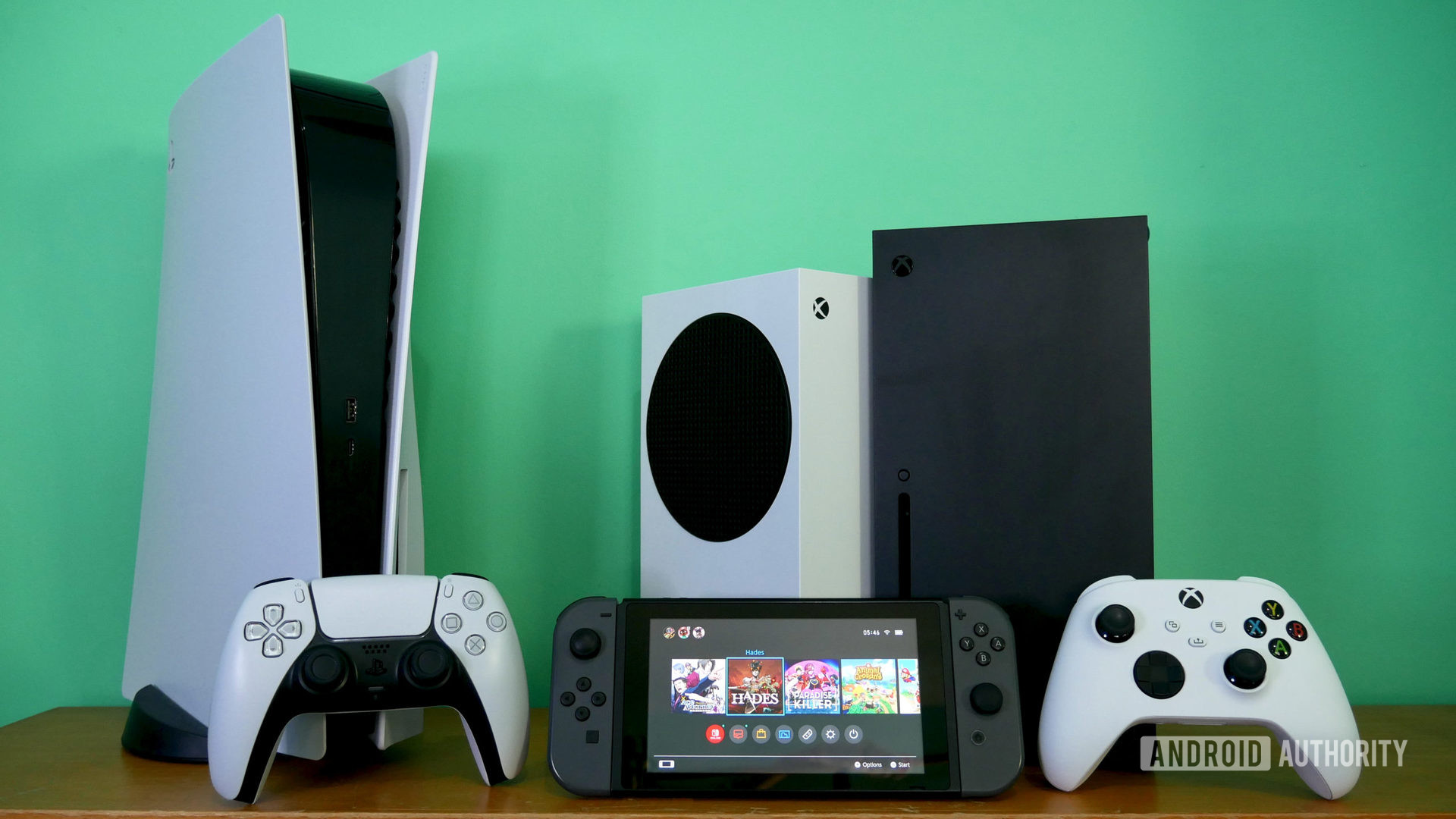
- Xbox Series X — $500/£450/€500
- Xbox Series S — $300/£250/€300
The Xbox Series X is roughly the same price as the original Xbox One and Xbox One X, while the Series S matches the launch price of the original Xbox and the Xbox 360 (without a hard drive).
The Series X’s main rival is the standard PlayStation 5, which also sells for $500. The Series S competes with the PS5 Digital Edition. The Digital Edition is a carbon copy of the regular PS5, but without a disc drive. As such it’s a little more expensive than the Series S at $400, but far more powerful as a result.
There’s also the Nintendo Switch to consider, though it doesn’t directly compete with Sony or Microsoft due to its hybrid design, reduced power, and unique games exclusive to the system.
Check out our dedicated articles below for comparisons between Sony and Microsoft’s ninth-gen consoles:
Xbox Series X vs Series S: The verdict
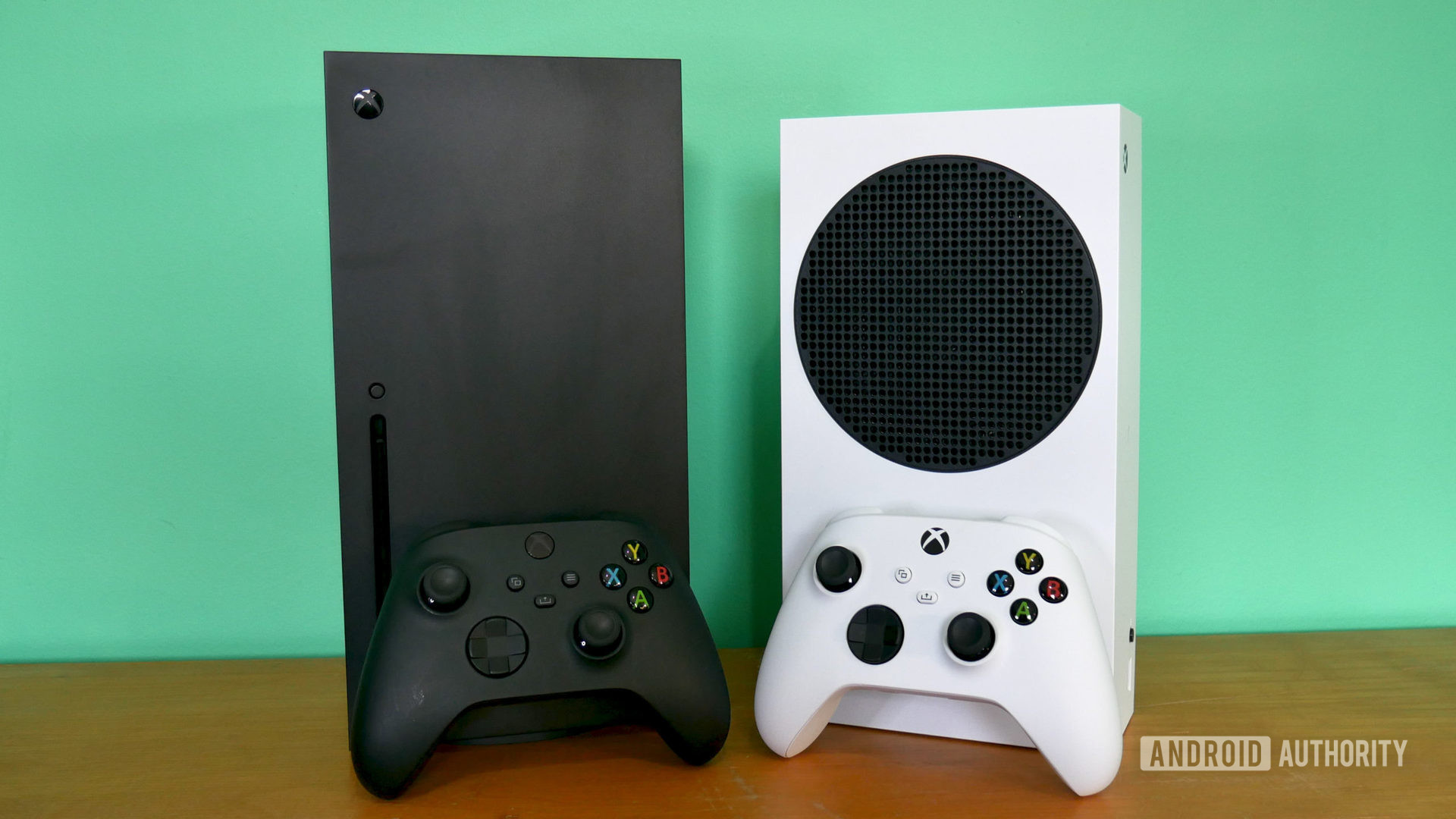
No matter which console you choose, Microsoft delivers a new generation of Xbox hardware that represents a significant step up from the Xbox One family. It’s not the leap we previously saw from 2D to 3D or even SD to HD, but the Xbox Series systems are the closest Microsoft consoles have ever been to matching gaming PCs and elite gaming laptops for raw power.
This is especially true for the $500 Xbox Series X. The current library of games is only scratching the surface of its potential, but it has the specs on board to rival competitors for years to come.
Meanwhile, the Series S makes a few compromises on its specs sheet to present the best of the new generation — gaming at up to 120fps, fast loading, and ray-tracing — at a more affordable price point.
The truth is unless you’re planning to run the two consoles side-by-side, you’re not going to notice the performance difference.
It’s certainly there; the Xbox Series X is unquestionably leagues ahead of its smaller sibling for processing grunt. However, this likely won’t be the deciding factor for many buyers. Instead, the reduced storage, design footprint, the presence or lack of a disc drive, and, perhaps most of all, the price, are far more likely to sway your purchasing decision.
Xbox Series X vs Series S: Which is the better buy?
After spending a little time with the Series S, it quickly becomes apparent that it’s the perfect partner for Xbox Game Pass. So much so that without it, it feels woefully incomplete.
The lack of a disc drive and reduced storage are less impactful when you’re swapping and changing games from a huge rotating library of titles. Not having Game Pass on the Series S would be like buying a streaming device but not subscribing to any streaming services. Xbox Game Pass — and notably Game Pass Ultimate — is a wonderful option on the Series X. On the Series S, it’s damn near essential.
The Series X is a powerhouse that succeeds on its own, while the Series S relies on a Game Pass subscription to really shine.
If you’re all-in on the Game Pass subscription model as the future of gaming, the lack of a disc drive and the low storage on the Series S almost become a non-issue, but that’s still a significant if. For those that want the best and only the best with no compromises? Microsoft has a console for people like that too: Xbox Series X.
